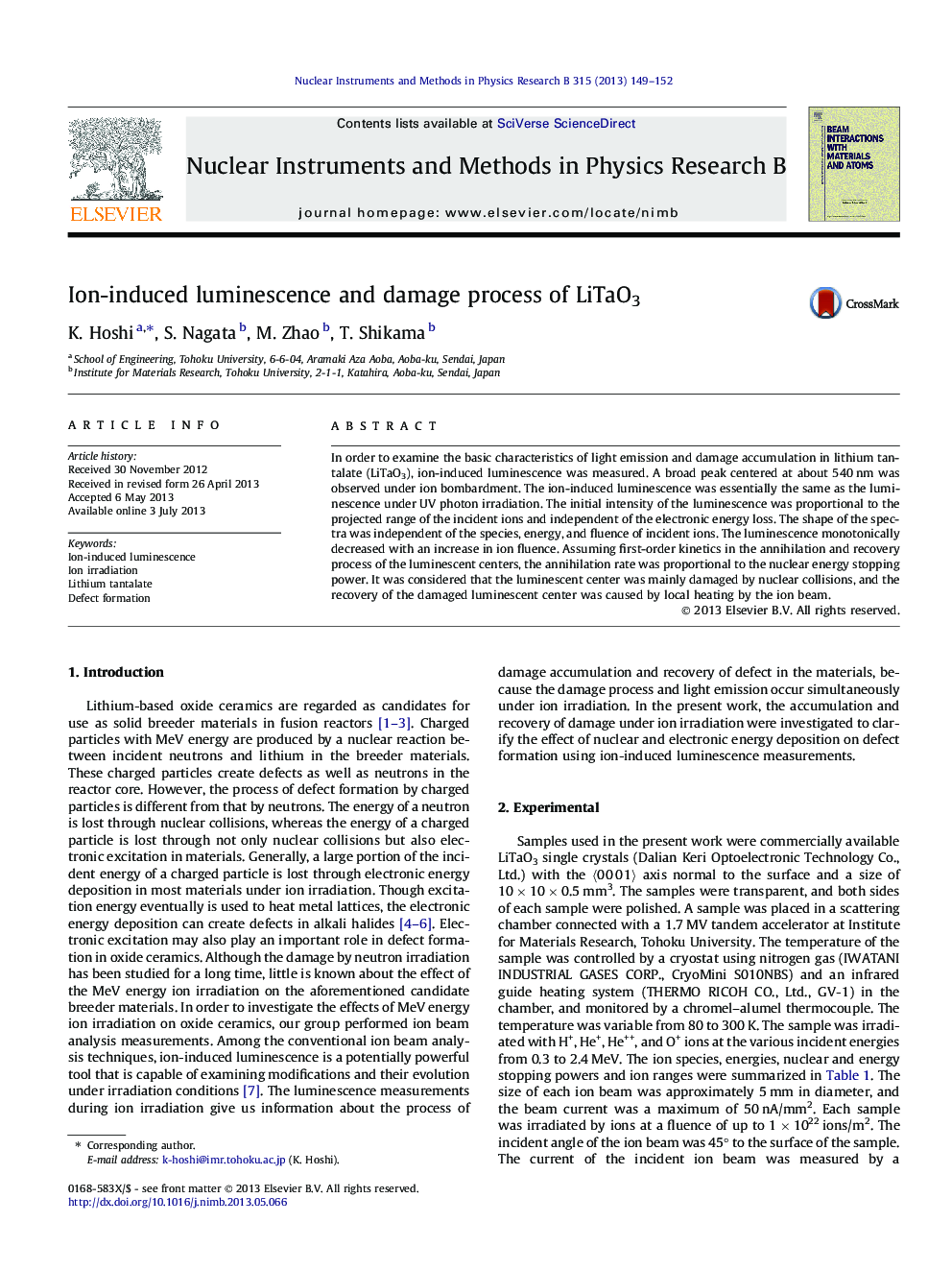| Article ID | Journal | Published Year | Pages | File Type |
|---|---|---|---|---|
| 8042282 | Nuclear Instruments and Methods in Physics Research Section B: Beam Interactions with Materials and Atoms | 2013 | 4 Pages |
Abstract
In order to examine the basic characteristics of light emission and damage accumulation in lithium tantalate (LiTaO3), ion-induced luminescence was measured. A broad peak centered at about 540Â nm was observed under ion bombardment. The ion-induced luminescence was essentially the same as the luminescence under UV photon irradiation. The initial intensity of the luminescence was proportional to the projected range of the incident ions and independent of the electronic energy loss. The shape of the spectra was independent of the species, energy, and fluence of incident ions. The luminescence monotonically decreased with an increase in ion fluence. Assuming first-order kinetics in the annihilation and recovery process of the luminescent centers, the annihilation rate was proportional to the nuclear energy stopping power. It was considered that the luminescent center was mainly damaged by nuclear collisions, and the recovery of the damaged luminescent center was caused by local heating by the ion beam.
Related Topics
Physical Sciences and Engineering
Materials Science
Surfaces, Coatings and Films
Authors
K. Hoshi, S. Nagata, M. Zhao, T. Shikama,
